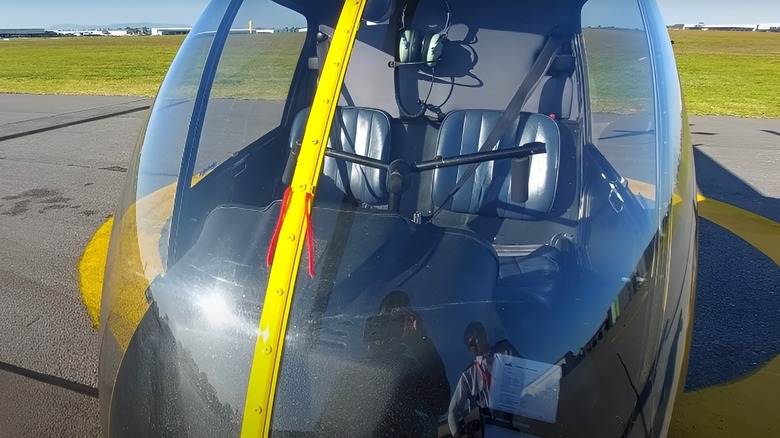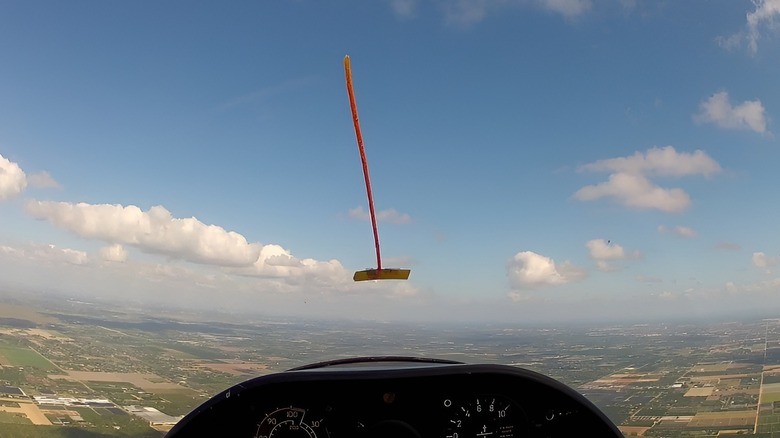What Is The String On The Front Of A Helicopter For?
Automobiles, such as cars and trucks, move in two dimensions — they can either move forward or backward, and left or right. However, aircraft and gliders can move in three dimensions, meaning they can roll, pitch, and yaw.
Quick question: how do you know your car is going left or right while driving? Typically, if you see the car's hood (some classic cars packed the craziest of hoods back in the day) leaning left in relation to the road, the car's going left and vice versa. Imagine, however, that you're moving in three dimensions and there is no road to use as a frame of reference. How do you know if you are going straight or yawing to one side?
While the space part might be a bit of a stretch, aircraft such as helicopters, planes, and even gliders face a very similar problem. It is extremely difficult to detect if the aircraft is yawing in one direction from inside the cockpit with just visual cues, as there are no fixed reference points in the sky. While modern helicopters pack a variety of instruments to inform pilots about roll, pitch, and yaw of the aircraft, many helicopters and gliders still use a simple yet effective tool known as the yaw string to detect yaw.
Working of the yaw string
The yaw string is a basic instrument with one end attached to the front of a helicopter or a glider, while the other end of the string is free to move according to the aircraft's motion. First used by the Wright brothers on their glider and airplane (on their monumental flight that changed aviation forever) the yaw string is considered one of the first instruments used in aviation and still finds its place on some modern helicopters today.
As the aircraft moves, air flows against its front and subsequently against the yaw string. The yaw string, then, sticks against the helicopter's windshield, either upright or at an angle. An upright yaw string indicates the aircraft is moving in a straight line with no yaw. An inclined yaw string indicates that the aircraft is yawing to the side opposite the string. While it may seem counterintuitive, the string's behavior is similar to how your body leans in the opposite direction during a sharp turn in a car.
Consider a helicopter yawing to the left. Subsequently, the wind blows against the helicopter sideways, causing the free end of the string to move towards the right. Pilots can then use the rudder pedals to stabilize the aircraft if it begins to yaw unintentionally.
Although pilots are fed the same information through onboard instruments, the yaw string is a redundant yet crucial instrument that can guide pilots in case of an instrument failure. The fact that it is extremely reliable, requires no power, and weighs almost nothing are some reasons why the yaw string has stood the test of time.

